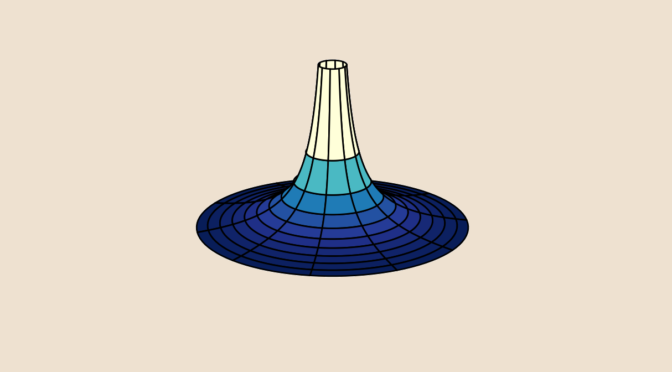Can you paint a surface with infinite area with a finite quantity of paint? For sure… let’s do it!
Consider the 3D surface given in cylindrical coordinates as S(ρ,φ):{x=ρcosφy=ρsinφz=1ρ for (ρ,φ)∈[1,∞)×[0,2π). The surface is named Gabriel’s horn.
Volume of Gabriel’s horn
The volume of Gabriel’s horn is V=π∫∞1(1ρ2) dρ=π which is finite.
Area of Gabriel’s horn
The area of Gabriel’s horn for (ρ,φ)∈[1,a)×[0,2π) with a>1 is: A=2π∫a11ρ√1+(−1ρ2)2 dρ≥2π∫a1dρρ=2πloga. As the right hand side of inequality above diverges to ∞ as a→∞, we can conclude that the area of Gabriel’s horn is infinite.
Conclusion
Gabriel’s horn could be filled with a finite quantity of paint… therefore painting a surface with infinite area. Unfortunately the thickness of the paint coat is converging to 0 as z goes to ∞, leading to a paint which won’t be too visible!

